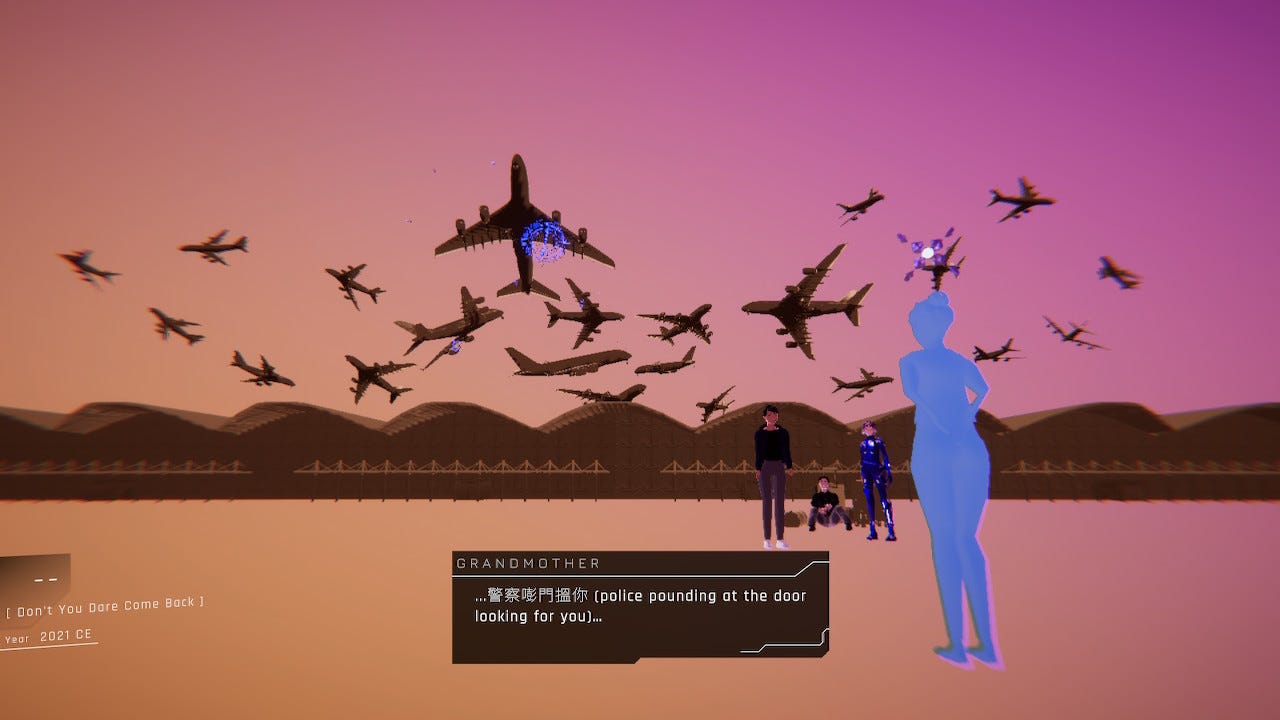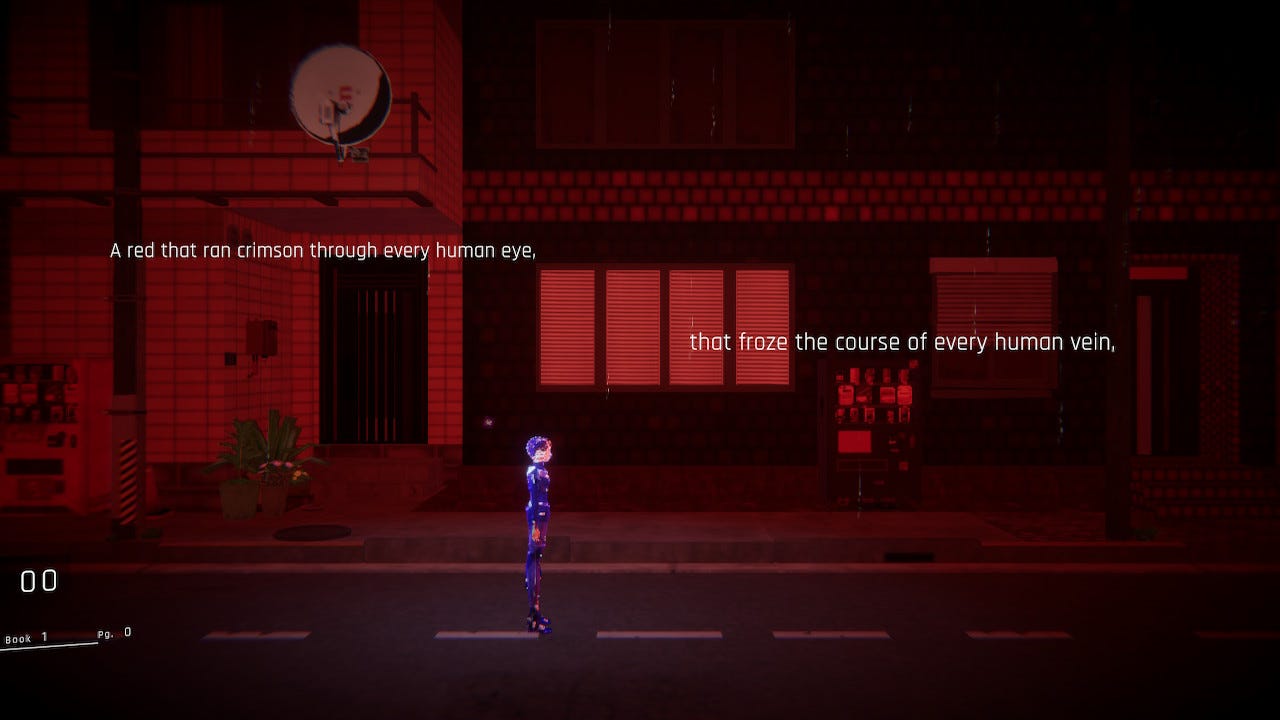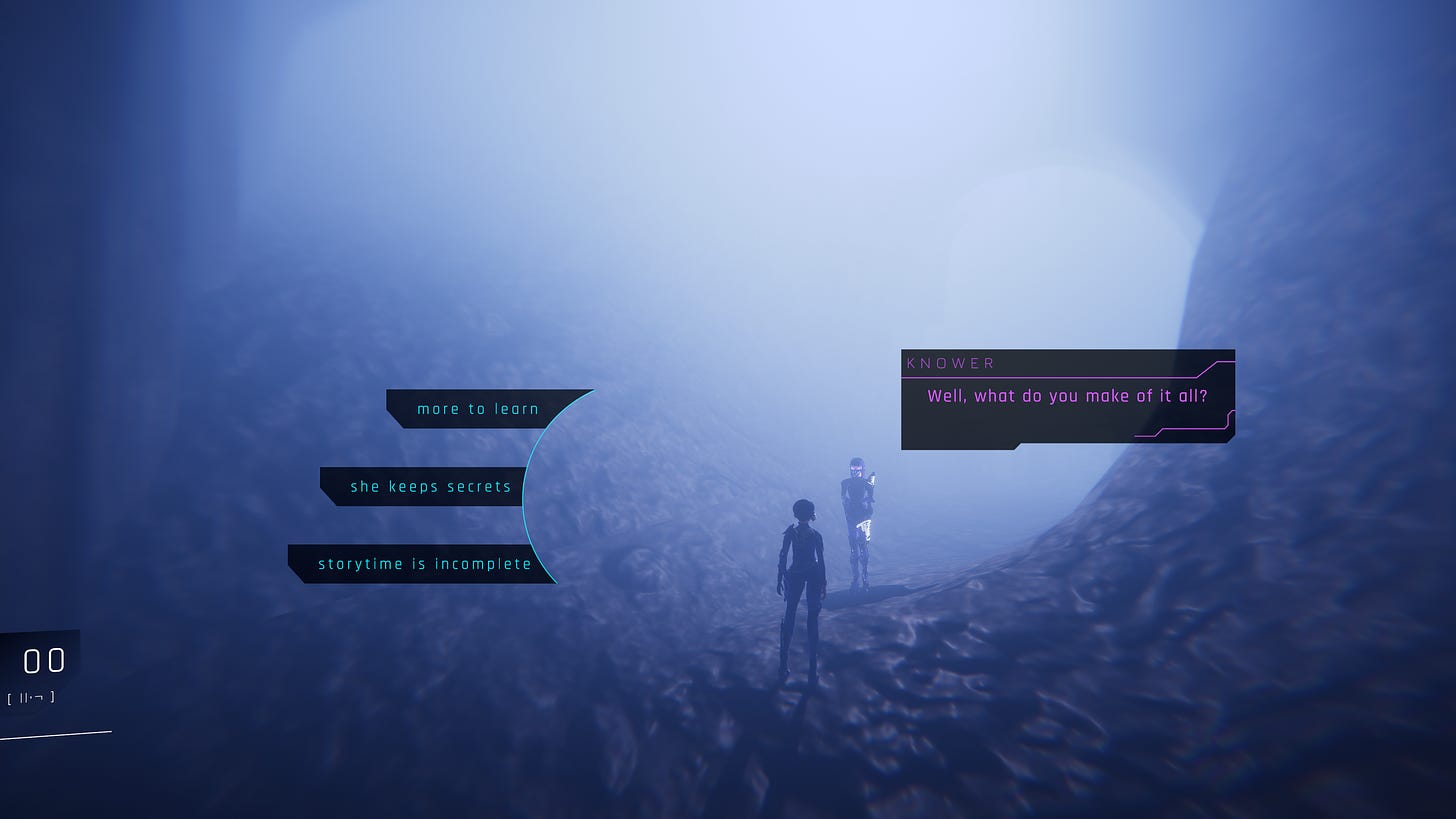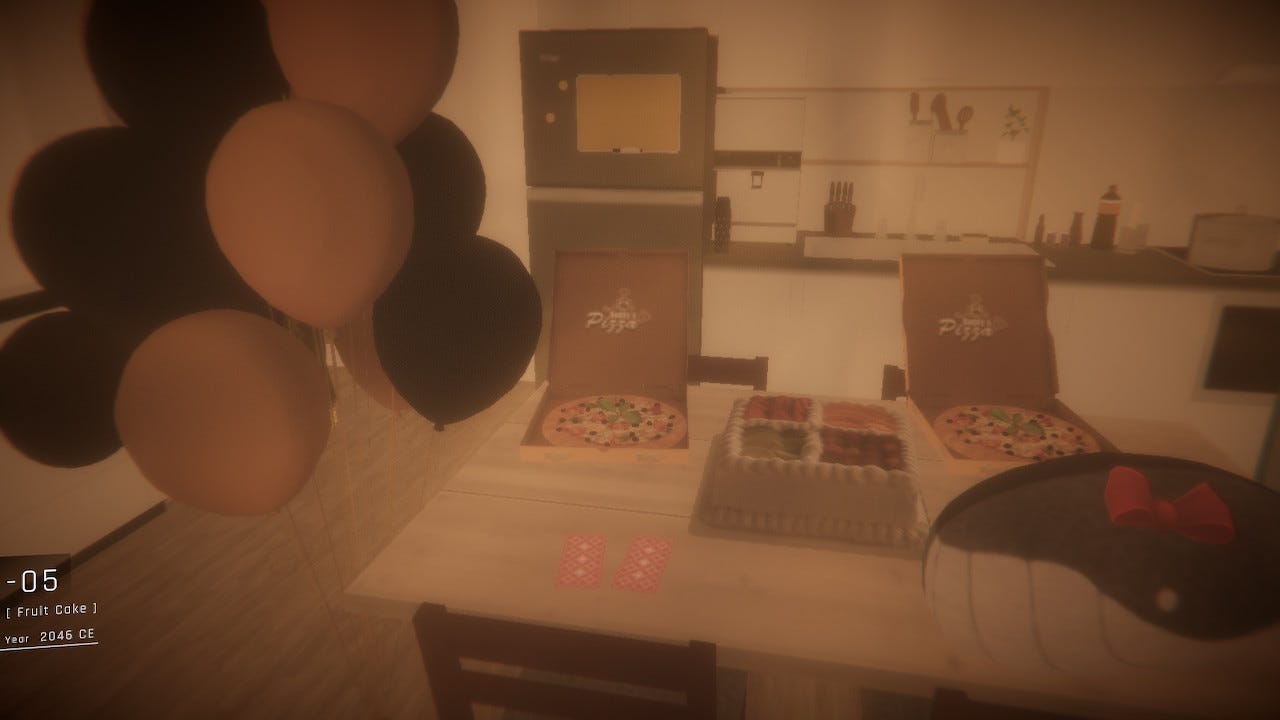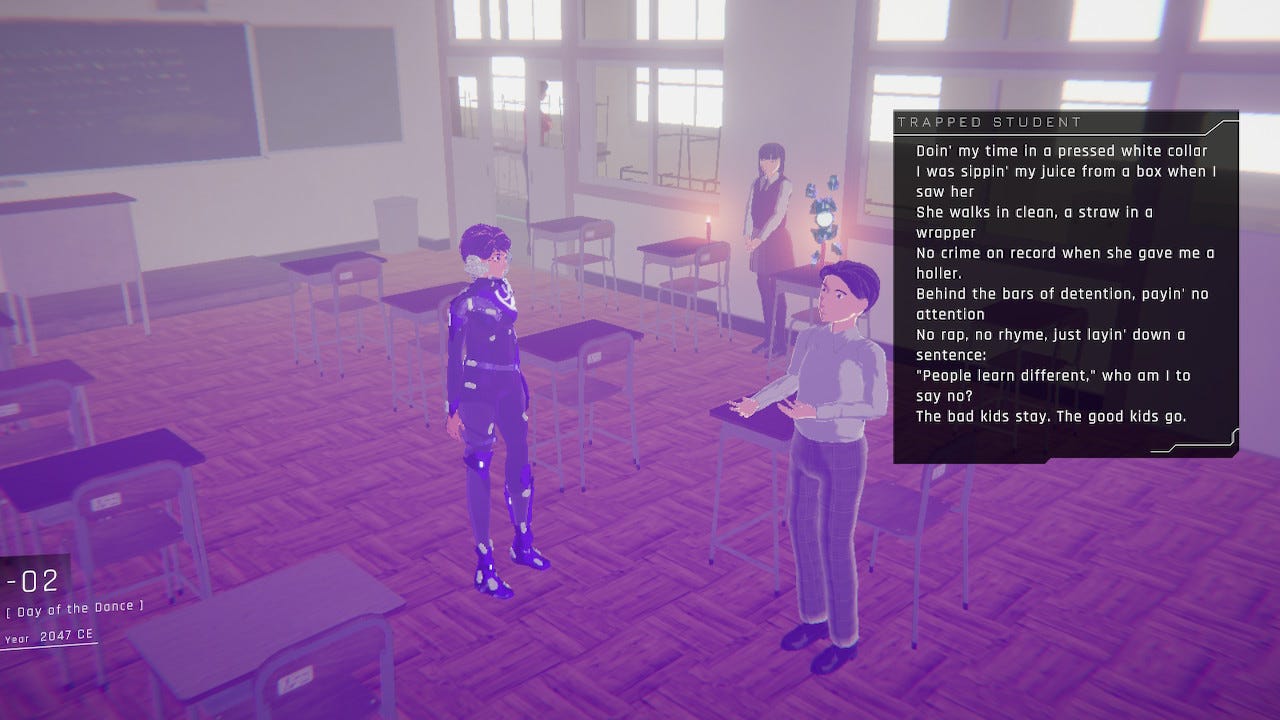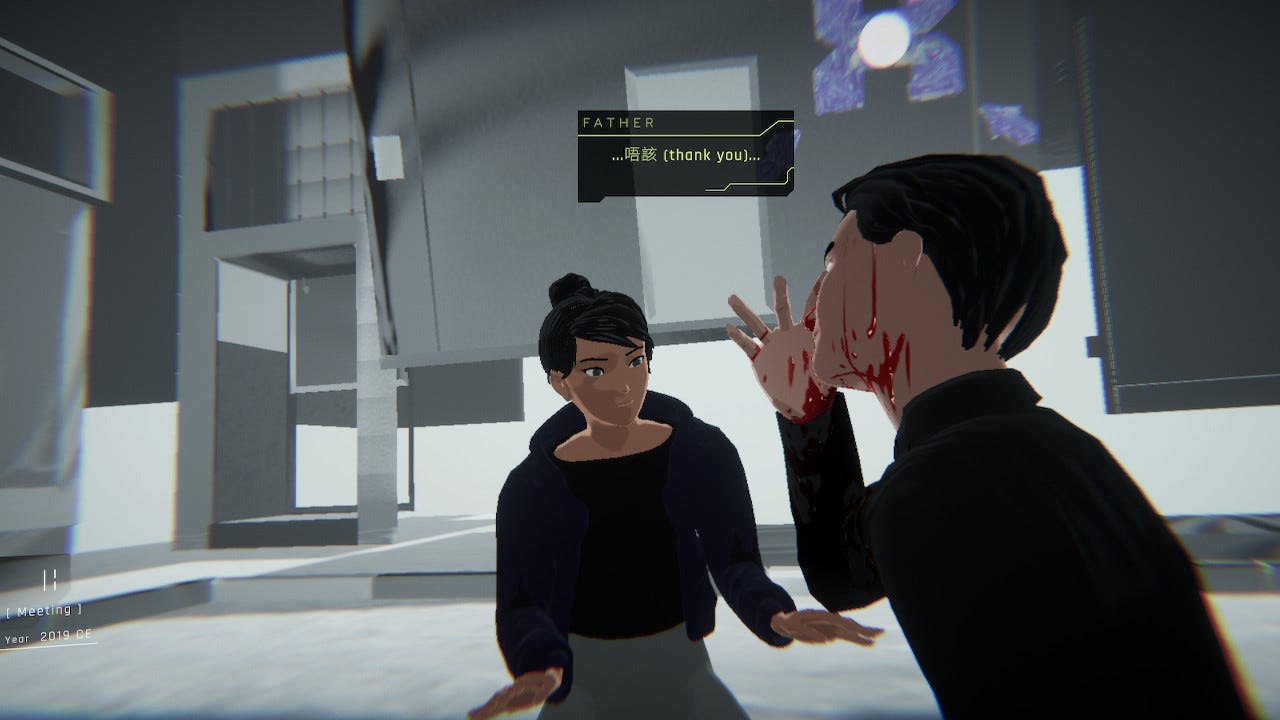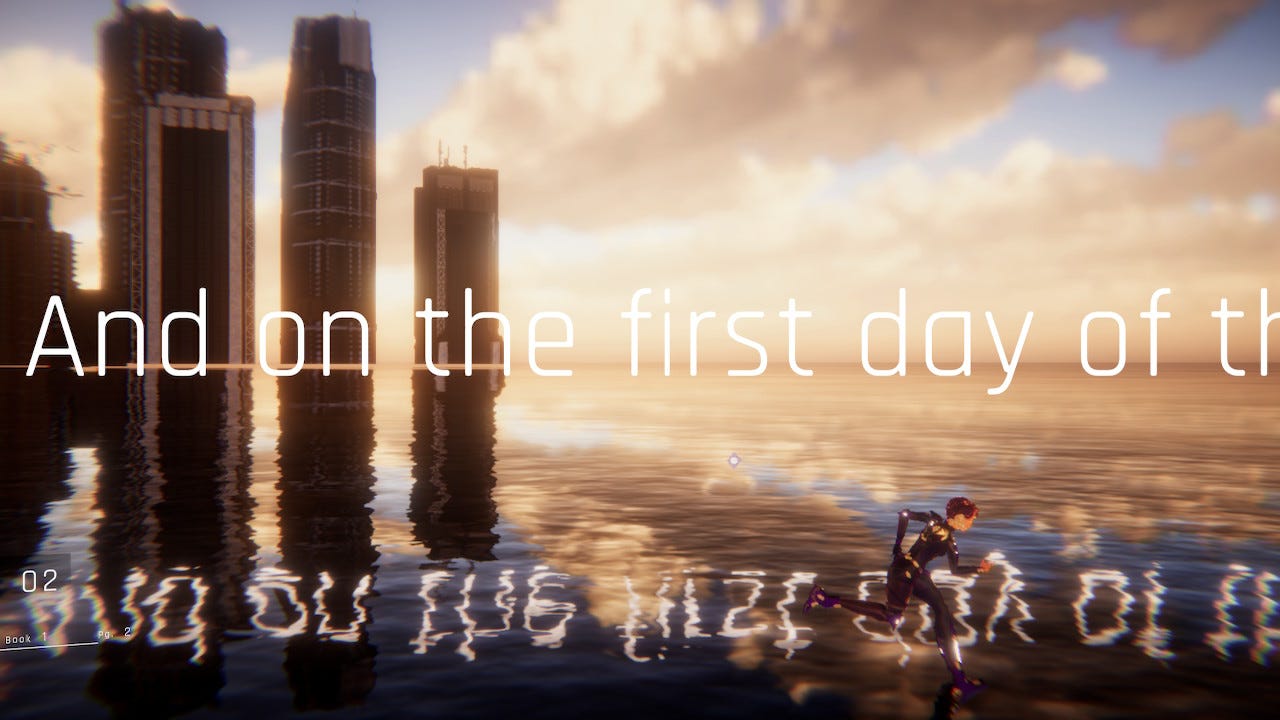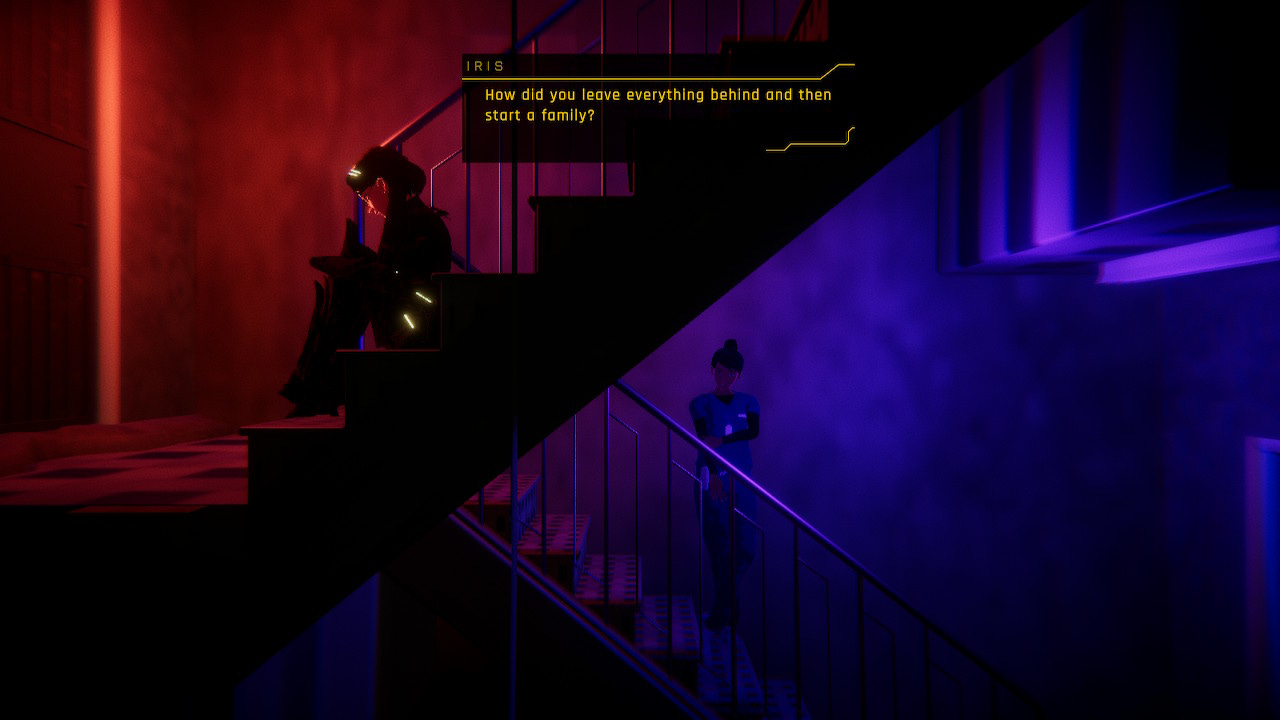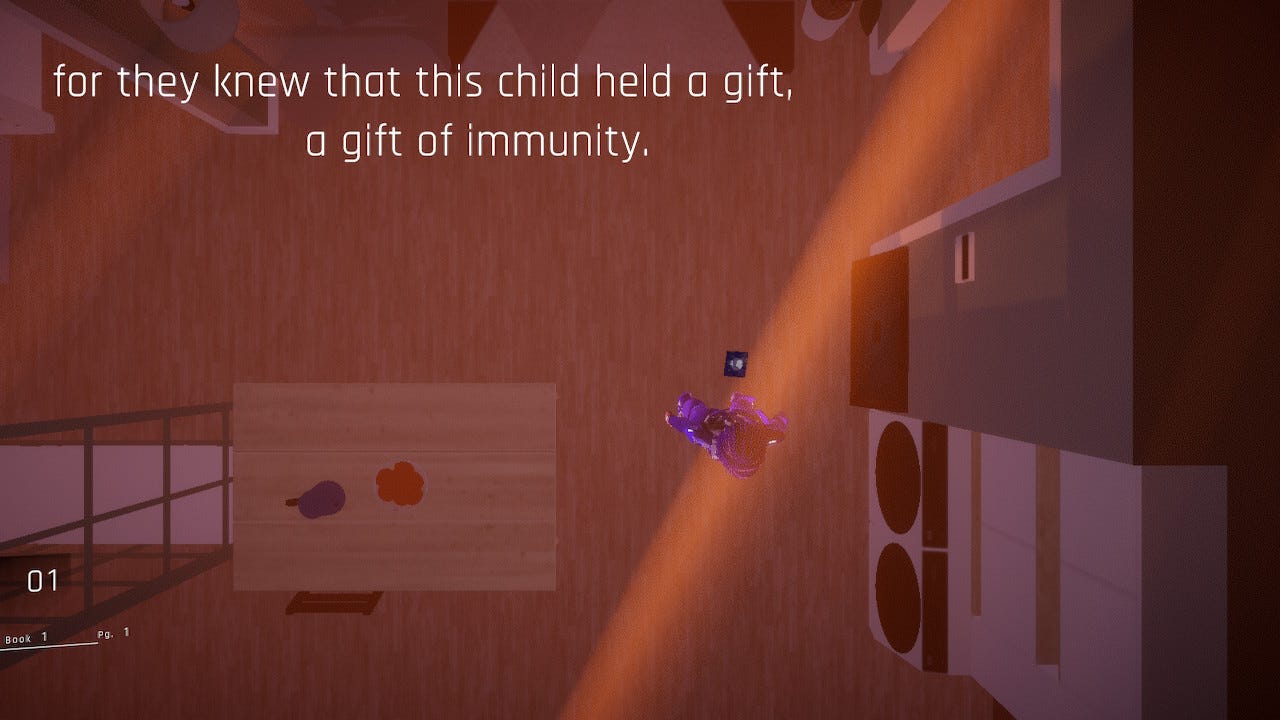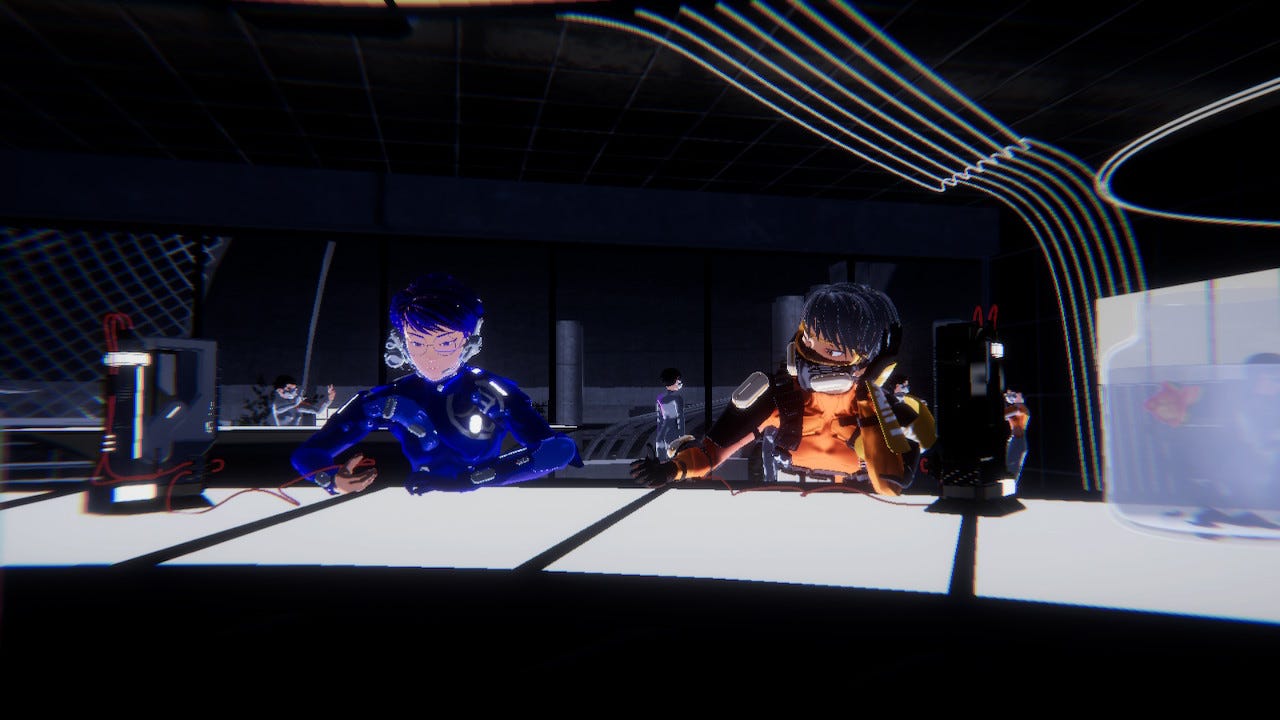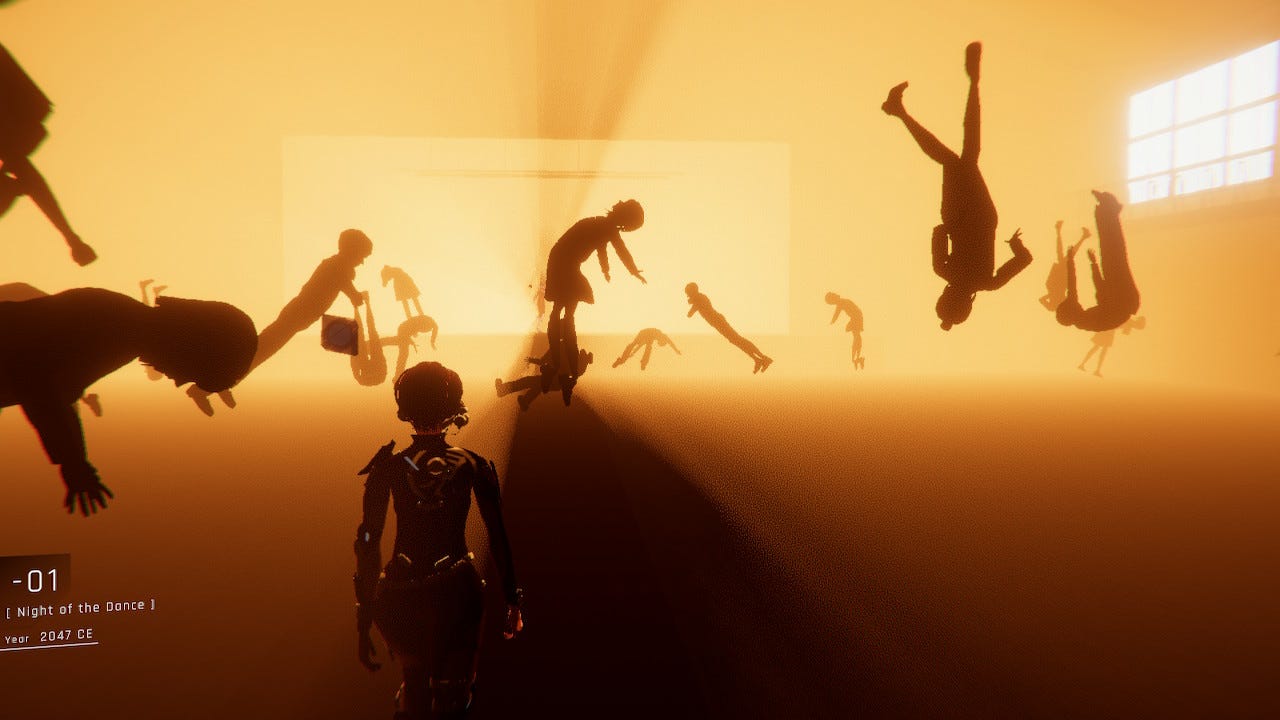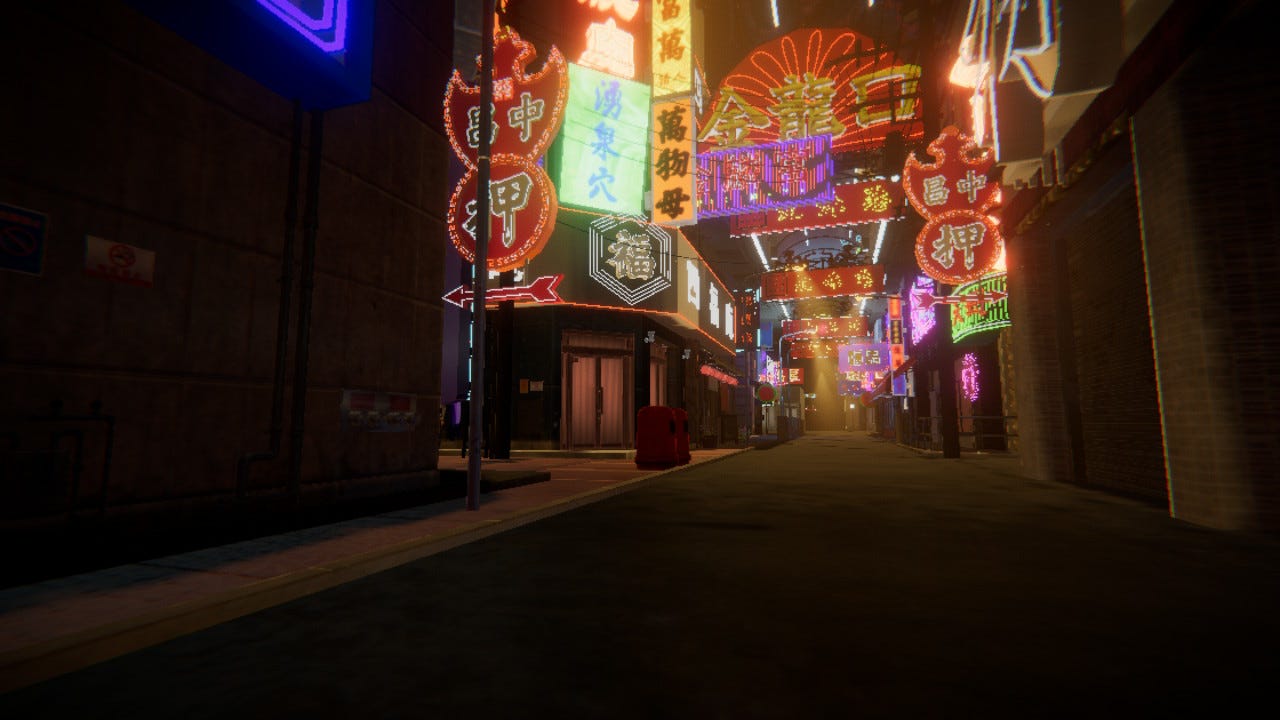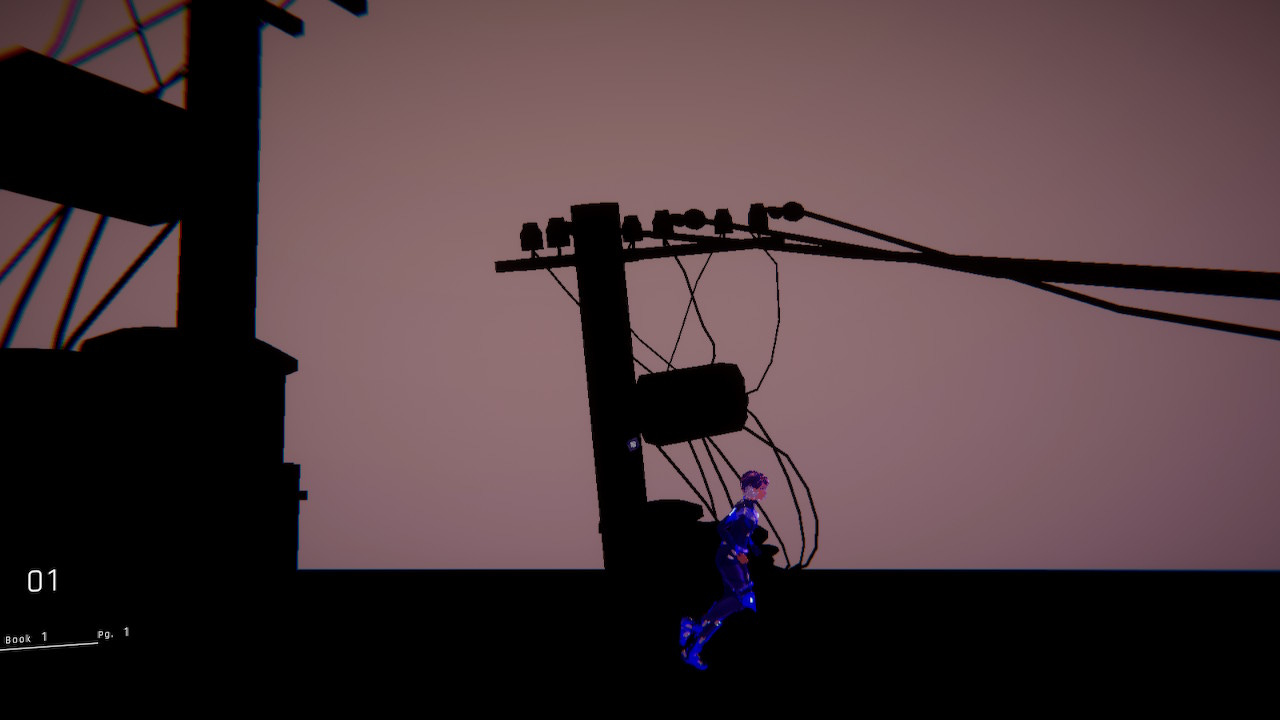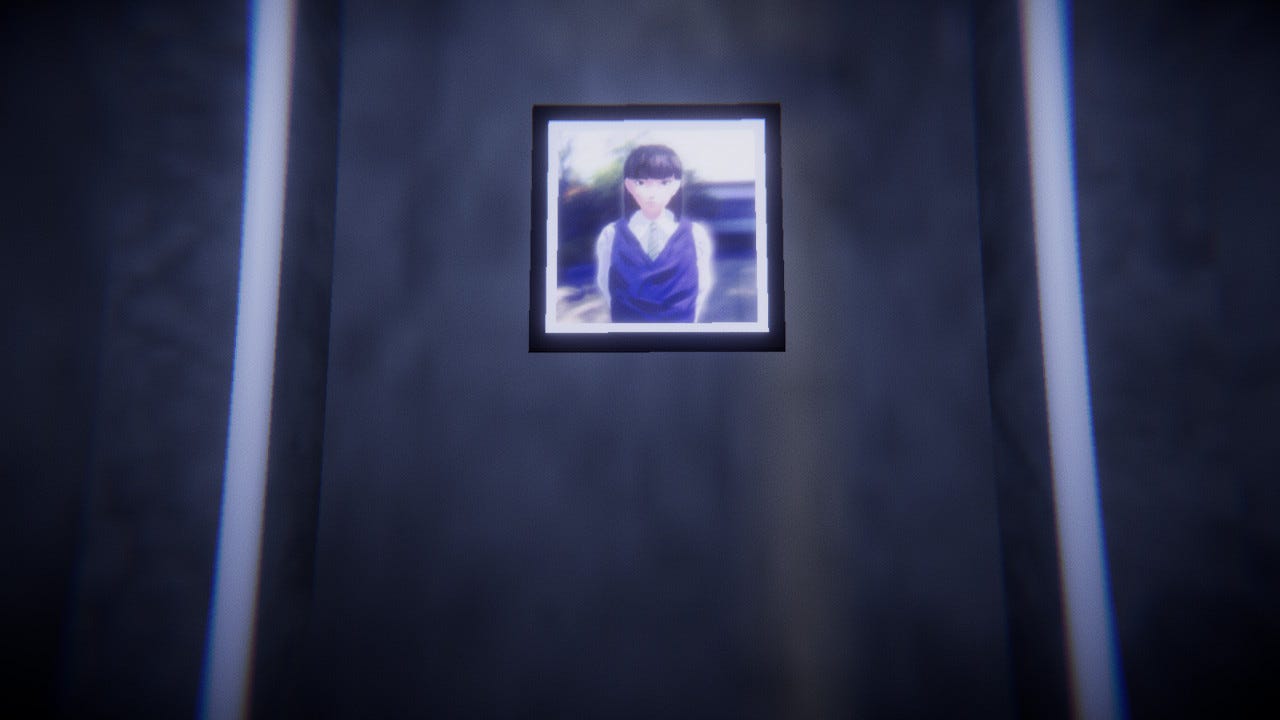sunset visitor's Remy Siu on 1000xRESIST, protest, game design and more
Following the game's May 9 launch, its creative editor shares a few insights with The Qun
“I was in Hong Kong in October of 2019, and they had made masks illegal — because demonstrators were trying to hide their identity,” recollects Remy Siu, composer and new media artist, creative director of 1000xRESIST and founder of the studio sunset visitor. It may be recalled that Hong Kong’s then-chief executive Carrie Lam had invoked a draconian colonial-era law to outlaw face masks in a bid to quell anti-government protests. “So they made masks illegal because they didn’t want you to hide your identity,” he continues, “And then only a few months later, everybody was like, ‘Oh, shit… Put the masks back on! Put them on!’. It was just a farce.” Over four years later, masks, resistance and disease form key elements of the game that launched last month.
Some would call what you are about to read a freewheeling chat — this is a journalistic cliché I am loathe to use, and yet can find no better way to describe a conversation with Remy about 1000xRESIST (pronounced ‘1000 times resist’ and not ‘1000 X resist’, in case you were wondering) that touches upon violence, Google Maps, taking back the accepted cyberpunk aesthetic, immigration and possibly even Wong Kar-wai. I think. Well, you’ll find out in good time. In preparation of all that freewheeling, here’s a peek at the game that forms the basis of this discussion.
Before we crack on, I do have one bit of advice: Please go play the game first, because spoilers will follow. Consider yourselves duly warned.
For Remy, it was the intersection of the Hong Kong protests1 and the COVID-19 pandemic that set the 1000xRESIST wheels in motion. “For some reason, I was really interested in somehow spinning out this image of the person in the mask, because now the mask had all sorts of meanings,” he explains. Of course, going from representing something from which the establishment needed to protect itself to one that the people required in order to protect themselves is quite the evolution.
“I then wanted to somehow fling this far ahead in time, in a hopeful magical realist leap that somehow this meme of an image kind of survived into the future,” Remy continues, before adding, “It wasn’t so much a cognitive or discursive thing that I was thinking about as much as a strange feeling that I was wanting to explore… and that was my headspace around the time I started thinking about the game. The early pandemic was a pretty wild time.”
Remy, a first-generation Asian-Canadian immigrant (like much of the sunset visitor roster and the game’s central character Iris), was back in Canada a few months later — just in time for the world to begin sheltering in place. “I think the West locked down in mid-March,” he says, “Well, when did the NBA decide to stop doing games?” March 11, my internet search reliably informs us. “It was around that time that I kind of did nothing for maybe two weeks or so, and then I started tinkering with the prototype [for what would become 1000xRESIST],” Remy adds.
Vision and process
It’s a tricky feat to attempt to classify the game within the confines of any one genre given its variety of influences and interpretations of form, narrative and gameplay. I would personally call it a somewhat choice-driven, highly-cinematic narrative adventure with puzzle and action elements. The game’s description on its game’s Steam page (and indeed its Nintendo Switch page) refers to it as a ‘thrilling sci-fi adventure’, which while mildly parsimonious, is fairly accurate. The Steam page, incidentally, is a great place to get a closer look at the story and gameplay mechanics of 1000xRESIST. The blurb continues:
“1000xRESIST is a thrilling sci-fi adventure. The year is unknown, and a disease spread by an alien invasion keeps you underground. You are Watcher. You dutifully fulfil your purpose in serving the ALLMOTHER, until the day you discover a shocking secret that changes everything.”
“We knew very early on that this game would be super narrative-focused. And so we began to do some thinking about themes,” Remy explains and then catches himself, “Actually, that’s not 100 per cent true. If I go back and I look at the prototype when I began working on the prototype — and before there was any story, I was just referencing my desire to have a Mass Effect experience where I didn't have to go around shooting anybody.” Whether it’s a game, a film, an amusement park ride, a pizza topping or even a brand of toothpaste, the words ‘Mass Effect experience’ are a surefire way to grab my attention.
“That was the original place where I was starting the prototype, but we acknowledged then that if we're going to have a Mass Effect without any shooting, much of it has to be narrative-focused. And so then that's when we kind of peeled away,” he adds, “And then myself and the writers, as they joined, started off with the thematics, and then brainstorming kind of what could happen: Who are the characters? What are they like?”
As is the case with most creative projects, things change from the initial ideas and impressions, and the approach that the folks over at sunset visitor adopted was subtraction. “This is something we know from the arts: If you keep adding stuff on top of stuff, you’ll you'll never be able to make space for something new,” Remy elaborates, “So the idea was to ask very simple questions like, ‘If we’re going to make a very pure narrative game, what would that feel like? And what can we reference?’ And in games, we have so many assumptions about what something should be or what it is. If you even remove just this one thing from it, all of a sudden there’s so much space for a new type of discovery or a new type of way of doing something.”
And then there’s the fact that there’s no combat in this game. “Yeah, so we’re constantly writing new things for the player to encounter, since there’s no random battles or anything of that sort,” he adds and draws a comparison to writers rooms on TV shows. "In one of those, you’d maybe pitch a scene and point out the conflict in the scene, but it doesn’t always make sense in games, because you’re often pitching an overall scenario and not a scene.”
Remy goes a bit deeper into this concept with a reference to the second chapter of the game. And I’m reminded that I did issue ample warning that there would be spoilers. “So in the case of Chapter Two, we know this is going to be in first person and we know it's going to be about the family of the character Iris. But what is actually happening in that chapter?” he asks rhetorically and continues, “Eventually we broke it down that the conceit was that it’s all framed around Iris leaving the house — and so we constantly return to her packing her things, that was the through-line conceit of of that chapter.”
But it’s not always like this. Sometimes, it’s a bit easier, like in the seventh chapter when you are being interrogated. “There’s lots of fun things to-… well, ‘fun’ things to explore in that regard,” he notes with strong emphasis on the air-quotes around ‘fun’. Narratively, however, things got quite tricky after the crucial sixth chapter of the game. “We were in very dangerous territory where we didn't know [what would happen next],” Remy reveals, “We had to really feel our way through it because it was like with each chapter we were putting ourselves in a really dangerous narrative position. We really didn’t know what would happen next.”
On violence
“There are games where you might have an emotional scene, then you go off and kill 500 people, and then you might have another emotional scene — there’s that kind of little narrative dissonance,” Remy offers as we move into the next part of the discussion, “As opposed to this, it’s hard to always make the player do things that are happening in a real and more organic way. We tried to collapse that as much as possible and be like, ‘Okay, maybe it’s fine that you don’t know why you’re [doing the mundane task of] packing things up in this chapter, but you will later.”
Considering Remy’s aim of making a Mass Effect without combat, it’s quite interesting that this combat-less game is set in a world that is inherently violent. I begin to wonder if this was some sort of statement the developers were trying to make. “Well, you know what's funny? I don't think it was very intentional,” he laughs, “It’s funny also because someone on X (formerly Twitter) said, ‘This game has no combat in it, but at the same time it is paradoxically the most violent game I've ever played’. And I thought damn, maybe he’s right.”
“But even when we were doing our age ratings, I didn’t think that the violence here was depicted in a way that's super violent,” Remy continues, “Like, for example, if you go and take a screenshot of Ellie killing anybody in The Last of Us and it’s horrifyingly violent and detailed, right? Nothing like that happens in our game, but perhaps some people feel like it feels more violent. And I think part of that was just the type of violence itself.” Take your time with that last line.
We good? Alright, let’s throw it back to the sunset visitor founder for an elaboration. “One thing we always really wanted to be careful of is how we depict violence, especially if it was intimate violence or emotional violence with the kind of weight that it has,” says Remy putting it all into perspective, “And I think part of [people finding the game really violent] it is that maybe they feel the impact of each action even more because you're not constantly just going around killing people. The violence has proper weight.” A way of looking at it is that no one is particularly shocked when the band Poison releases a ballad, but if Metallica was to put out a ballad, you’d get quite the reaction.
It’s worth noting at this point, that the handful of violent moments in 1000xRESIST are over very quickly. Remy underscores the point by adding, “Yeah, so when we do actually have real violence — like physical violence, we try to depict it really quickly, like really fast and quickly and suddenly. Also because, you know, that's how violence can happen in real life. And so maybe that aspect of it also makes people feel that it’s more violent [than other games].”
Immigration and inspiration
The idea of resistance is a key thread that runs through the game, and has been a strong inspiration through its every iteration. Remy believes it was a key element from the very beginning. “I was seeing a lot of Hong Kong protest art, usually depicting somebody in a hard hat, goggles and a mask,” he recalls, “This could be graffiti or internet art, and I was really enamoured by the kind of self-image that they were drawing of themselves.”
The other major theme that I can pinpoint in 1000xRESIST is immigration, or rather the immigrant dilemma: Longing for home versus dreaming of a better life. Remy concurs, “I think it does play a huge role in the game — part of it is that it’s definitely a beginning point, because, you know, many of us are a diaspora living in Canada for most of our lives, if not all of our lives. And I guess we're old enough at this point to have many thoughts about [being immigrants or descendants of immigrants].”
It bears mentioning here that most of the sunset visitor team have formidable experience in art, theatre and other performance arts. “There’s a lot of our work prior to this game that also explored these ideas,” he continues, “And I think we got better and better at understanding what we were trying to say; so in many ways, I think that 1000xRESIST’s exploration of [these thoughts around immigration] is perhaps the most mature and nuanced version that we've done in our careers.”
This, Remy goes on to point out, was merely a starting point because there were a great many more ideas within this realm that his team and he wanted to explore. “There’s the certain kind of expectations thrust upon us by the previous generation, and also the expectations we have of them,” he expands on the other ideas, “And another was trying to really communicate this weird, effectual and strange space that the diaspora or immigrants feel at this point. And it could be said of anybody who doesn’t feel like they belong in their environment.”
Aside from sharing an experience, it was equally important to have these ideas form the emotional thematic core or starting point, because it’s not something that we see very much in sci-fi on a literal level. The 1000xRESIST creative director brings up an episode of Star Trek: Deep Space Nine as a rare outlier in this regard. “An episode that really influenced us was called ‘Far Beyond the Stars’, where Captain Benjamin Sisko experiences a hallucination that flings him back in time to the 1950s as a Black science fiction writer, where he experiences all sorts of prejudice.”
Science fiction or speculative fiction, Remy adds, can be very exciting because it lets us look at the real world in this sort of reflective and contemplative way. Another key inspiration was one of his favourite films, Millennium Actress. “It’s like a magical realist film about film. And it’s jumping back to post-war Japan, the recovery of the country and then the beginning of the Japanese movie industry,” he explains, “Magical realism, science fiction and speculative fiction grounded in this sort of real world chronologies is something that I’m really into.” And this affinity inevitably bleeds into 1000xRESIST.
Zoom in and you’ll find a whole host of other inspirations and homages littered all over every nook and cranny of the game. A large number of these muses for Remy and his team were found in the world of experimental theatre. “Any time that we were lost, we would refer back to these experimental theatre shows that we had seen,” he says, citing Lebanese lecture-theatre show The Pixelated Revolution as a major source of inspiration. If it’s Chapter Two and Iris exploring her home, then Gone Home was a touch point, even though unlike the game by The Fullbright Company, 1000xRESIST actually lets you speak to characters in the house.
“With the third chapter, we were thinking a little bit more along the lines of something like 13 Sentinels: Aegis Rim,” he adds, before letting me into the origins of a particular swerve in the game (you will really have to go play it for yourself) that is very Nier-influenced. And then, there’s the game’s incredible and ever-evolving art style.
“A lot of it is actually like [art director] Kodai Yanagawa’s own style, particularly the way that he draws these characters and transfers them to 3D,” Remy says, “He didn’t want it to look exactly like animé, but instead he did find a way to inject his own style in there a little bit. For example, the Shell bar (see above) was actually drawn before the game, as an illustration he was working on.” Among the other influences on the art style were Xenosaga, the Balamb Garden in Final Fantasy VIII and their own experiences in theatre — most notably, the way the text runs across the screen at certain points in the game.
“When it came to cinematography, we all drew influence from different sources. A significant inspiration came from Wong Kar-wai, Naoko Yamada and the list goes on,” he lists, “We were trying to synthesise a lot of different things. And a lot of the more distinct lighting is from my theatre background where I would have to light shows without a lot of light sources.”
He highlights the gym sequence (see above) for a specific example of how he used to use light during his theatre days. “We’d put a light behind somebody and put fog in the space and then have them move in front of the light and cast this like crazy shadow,” he says. Shadows and the usage of shadows is one of the standout visual features of 1000xRESIST that keeps bringing me back in a different way to Remy’s words about subtraction and how removing something can add so much.
Reclaiming the cyberpunk aesthetic
It’s during the fourth quarter of the game that you are introduced to the area of Old Town. It’s an explorable region that is bathed in that very familiar hue of colourful neon — something you’ve seen in such games as Cyberpunk 2077, Starfield, Stray and a whole host of other games. “That's also very Kowloon Walled City, which a lot of people think about Hong Kong in terms of architecture and cyberpunk,” Remy chimes in, “In certain types of cyberpunk there’s always this kind of architecture and one thing that I've always considered is especially in the West, they’ve taken that image and really removed all the Hong Kong people from it, and also [turned it into] a rather fetishised image”
“Old Town was definitely [imagined] to be a little bit like a Chinatown in places like Yokohama, Vancouver or other parts of the world,” he continues, “But, it wasn’t only a Chinatown, because there were more than just Chinese neon signs — there are some Japanese signs as well, so it’s really like an ‘Asiatown’ that is simultaneously inspired by all these places but a little fake as well.” The name Old Town suddenly starts to make a whole lot more sense — both in terms of the context in which it appears in-game and the real-world inspiration.
“It was a little bit like being back in these places — places we have inhabited in various capacities,” Remy elucidates, “And to put that in a science fiction context is an effort at non-violently reclaiming that image. There are many works out of Hong Kong that are doing that too, but less in games. It was our desire to take the image back.”
What’s next?
A patch went out late last week that added a map to aid with a certain large and open section of the game, and this was largely met with enthusiasm online. I express concern that the move might take away from the joy of exploration. “It’s a static map that doesn’t move, and you can play the whole game without using it,” reassures Remy, “The idea is to try to have a little bit of a middle ground [between the full map experience and a mapless one] in case you badly need to see the whole structure.”
The discussion about maps and how different games enable players to explore spills over into the very notion of navigation. “I’ve often wondered about how people from different parts of the world perceive of getting lost in their environments,” he muses, “People tend to bring their own habits into a video game and so, [navigation] may be very different for you if you live in a very grid-based North American city rather than places in Asia that don’t have the same grid-based logic. I wonder if people playing games in [the latter] areas have a little bit of an easier time to become accustomed to learning the space.” Over a brief back and forth we arrive at the conclusion that in 2024, it probably doesn’t matter what part of the world players are from, because in all likelihood, they all rely on Google Maps to do the navigation for them.
Returning to what else is on the horizon, Remy mentions that the team will be looking at any fixes that need to be made, and certain other features that may make their way into the game. “I wouldn't promise any new content in the game right now, so it’ll likely be more of a mode or something,” he clarifies, “Then we have a couple of little fun music releases coming up on our Bandcamp, plus there’s an expression for something physical, so we’re looking into that, and eventually, we’d love to bring the game to Xbox and PlayStation.”
Something physical? I venture to learn more. “People have expressed some interest in in merchandise,” comes the reply, “Something really weird that one of the fans had mentioned in [publisher] Fellow Traveller’s Discord was that they wanted a real picture of the character Jiao (see above) like the one in the game, to hang on their wall. I thought that was really funny and also really strange.”
And as we wind down what has been a most memorable chat, I feel compelled to ask one final question: Do you feel you have achieved a ‘Mass Effect without any shooting’ with 1000xRESIST? “The Mass Effect games were such a huge experience for me — so it’s hard for me to claim that I achieved the Mass Effect-ness of it,” he laughs, “But I would say that I feel we were able to make a very focused narrative experience, with some of my favourite aspects of Mass Effect (without the shooting).”
1000xRESIST is available now on PC (Steam) and Nintendo Switch
The Hong Kong protests of 2019-20 began in June 2019 against a proposed extradition bill allowing transfers to mainland China, sparking fears of compromised judicial independence. Despite the bill's withdrawal in September, protests continued with demands for full democracy, amnesty for arrested protesters, an independent inquiry into police actions, and universal suffrage. The movement saw escalating violence, including police clashes, vandalism, and significant public unrest.





